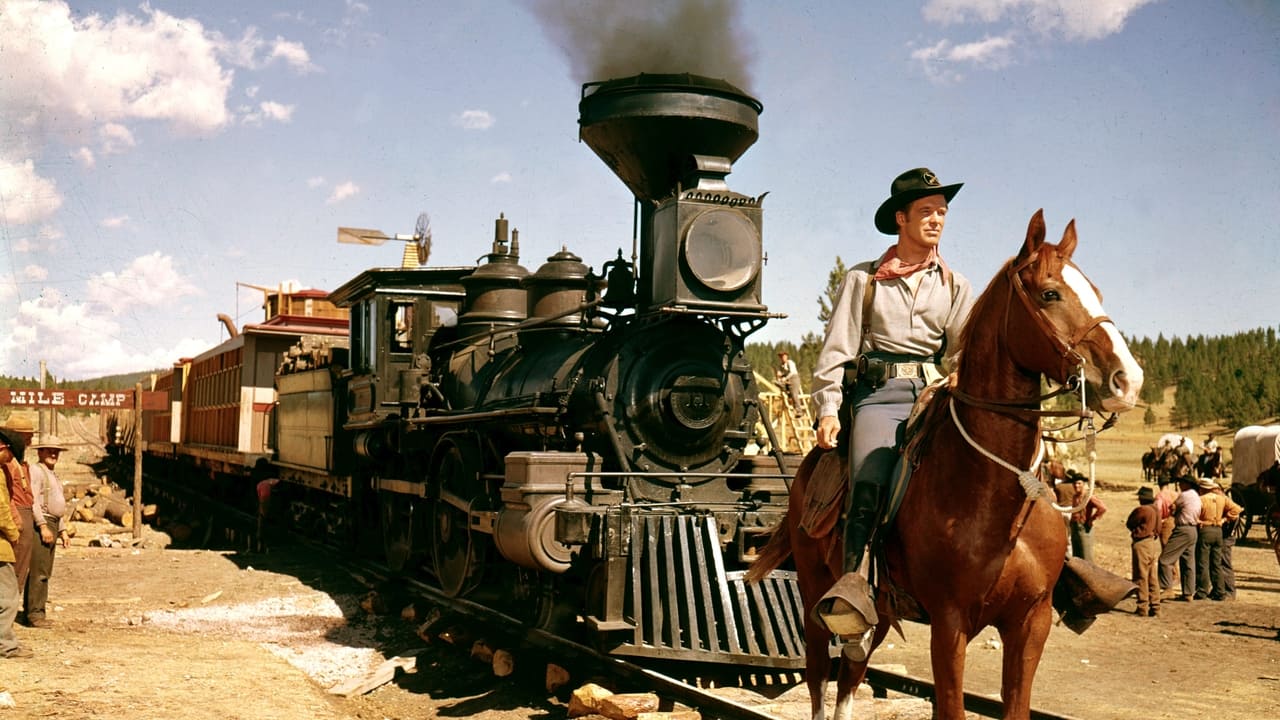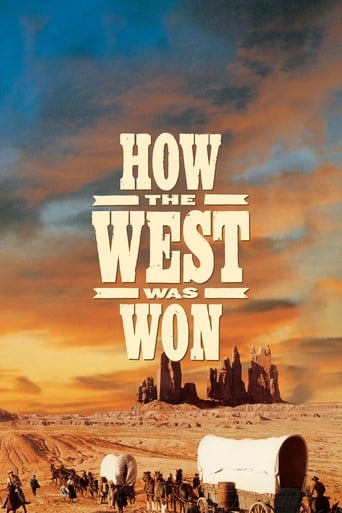

HOW THE WEST WAS WON was the 8th and final Cinerama film. Six travelogues preceded it, as well as MGM's only other feature in the process, THE WONDERFUL WORLD OF THE BROTHERS GRIMM (1962), released the year prior.MGM had taken a chance on the process to be able to satisfy the widescreen and stereophonic craze for epic films, but abandoned it due to its unsatisfactory performance next to its rival, Ultra Panavision 70, in which MGM produced MUTINY ON THE BOUNTY, also in 1962. The use of one camera, one strip of film and no curvature, and the ability to bring back close ups and medium shots sealed Cinerama's fate.This was a grand way to go out though. Five periods of the taming of the West: The River, The Plains, The Civil War, The Railroad, and The Law, and a roster of stars (13 leading, 10 supporting, plus a narrator). It had everything; story, cohesion, thrills – and all in enormous curved screen and Technicolor glory. At two hours and 44 minutes, it was the longest of the 8 Cinerama films and with its final shots (taken from or re-taken as a tribute to the America The Beautiful sequence ending THIS IS CINERAMA (the initial film in the process), it brought the Cinerama story full circle.Sad though that Cinerma cameras had a tendency to be covered with splotches of dirt in its aerial shots. This is rampant throughout the travelogues and here we can see it during Spencer Tracy's initial narration and at the end montage. How digital clean-up for Smilebox DVD presentation could have ignored these obvious defects is beyond my imagination.The image still needs some color correction and the images need sharpening, but the Smilebox DVD release is the best we have so far. The superlative score by Alfred Newman (one of his very best) is in turns stirring and sentimentally moving. Probably the most wrenching scene is Zeb's departure for the war, in which direction, score and the subdued performances of Carroll Baker and George Peppard bring tears.It is recommended to every lover of western films and to those in love with wide screen photography. The locations are gorgeous and always there to look at if one gets bored with the acting, direction or story line. All the actors do a creditable job, with the exception of Debbie Reynold's "old Lilith" at the end of the film. She did go on the next year to earn her only Oscar nom – for THE UNSINKABLE MOLLY BROWN (which used the same mansion exterior as her San Francisco house in WEST, by the way).It is interesting also to note upon reading these almost 150 reviews on the IMDb pages, that there seems to be no middle ground. Either reviewers loved the film or hated it. It's up to you to decide for yourself, but you must not miss it.
... View MoreAn overview of the colonisation of the central and western USA is told via various episodic tales of the trials and triumphs of several generations of one family.This 1962 movie was an Event as much as a film. It ran for nearly 3 hours, it featured a large number of big stars in roles from major down to cameos, and it was a Cinerama presentation - 3 linked cameras filmed 3 linked images which were projected on 3 linked screens which ran in a near semicircle, engaging the audience's peripheral vision.And that, in a nutshell, is both the film's greatest strength and its greatest weakness. For the very nature of Cinerama mean that the film is necessarily composed throughout in wide angle shots, many of which are simply gorgeous landscape vistas or shots of spectacular action. Conversely, given the choice to tell the story through one family, it turns out to be very difficult to convey intimacy when you can't use closeups. There are further problems, especially with sideways camera movements or lateral action - the fact that the left and right thirds of the image were at an angle to the audience plays tricks on a flat screen.It is nice to report that good work has been done on the remaster: the vertical lines where the 3 images met have been largely rendered unnoticeable where, previously, they were quite jarring on a TV screen.As for the film itself, putting to one side image issues (good and bad) and the starry cast list - well, it's OK. It tells a big story in general terms, and tells it tolerably well (but not brilliantly). Definitely well worth a watch, though.
... View MoreBrilliantly titled, "How the West Was Won" was originally released in a super-widescreen format known as "Cinerama". This was meant to duplicate the human vision span. The film had to be shot using three cameras, with the resulting three pictures segued into a final product. The right and left portions would be slightly curved. MGM's epic looked great in theaters and was a big hit for producer Bernard Smith and the crew. However, the "Cinerama" process had its limitations. Full-screen close-ups were not possible. The positioning of players and sets was difficult to align. And, the lines dividing the separate images were sometimes detectable, especially when released on home video and aired on television...The problems in watching "How the West Was Won" have been fixed, however. The latest home video restoration and current airings on Turner Classic Movies (TCM) look fine. The film's greatest strength is its sprawling landscape, which beautifully compliments the story. Still, there will come a point, relatively early in the running time, when the "Cinerama" limitations make viewing dull. The failure to get close to the performers slows the pace and takes away some of the story's intimacy. Incredibly, John Wayne looks small...The all-star cast is credited alphabetically, but some of the performers are seen more often than others. Initially, you will presume the film stars James Stewart (as Linus Rawlings). However, Mr. Stewart is only the leading man in the first (of five) segments. Even at a distance, Stewart looks amusingly miscast as a hot young stud. The main star is young frontier woman and singer Debbie Reynolds (as Lilith Prescott). Uniting the segments, Ms. Reynolds goes from teenager to family matriarch. She sings and dances, too. The soundtrack music, by Alfred Newman, is very appealing. Ken Darby and others contribute memorably to standards like "Shenandoah" and "When Johnny Comes Marching Home".****** How the West Was Won (1962-11-01) Henry Hathaway ~ Debbie Reynolds, George Peppard, Gregory Peck, James Stewart
... View MoreGood historic-drama. Incredibly ambitious, to incorporate the entire history of the United States' exploration and development of the west through a family history. However, the movie's reach exceeds its grasp. The linkages between the generations of characters and US history sometimes seems contrived and trite. With so much ground to cover, some events are skimmed over.The whole thing just doesn't gel as well as it should. Might have something to do with the fact that each set of characters is treated as a separate story, almost entirely different from the others, and has a different director (John Ford, George Marshall, Henry Hathaway)Probably the best reason to watch is for the all-star cast: James Stewart, Gregory Peck, Henry Fonda, John Wayne (miscast as General Sherman), Debbie Reynolds, George Peppard, Richard Widmark, Karl Malden, with narration by Spencer Tracey.
... View More